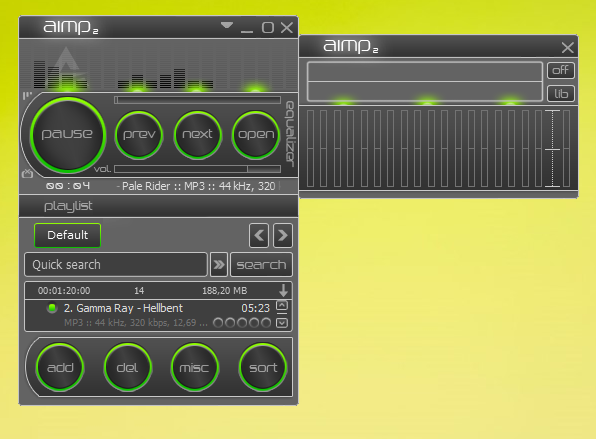

- #Best mp3 encoder settings how to#
- #Best mp3 encoder settings 320 kbps#
- #Best mp3 encoder settings portable#
- #Best mp3 encoder settings plus#
At 128 kbps, sound quality is rather poor. The three options here are Good Quality (128 kbps), High Quality (160 kbps), and Higher Quality (192 kbps). However, MP3 isn't the most efficient codec due to its advanced age.
#Best mp3 encoder settings portable#
MP3 Encoder: The old-school MPEG 2 Audio Layer 3 has near universal compatibility - virtually all portable players support MP3, as do ancient enemies Windows Media Player and iTunes. A four minute song will take up approximately 22 megabytes in Apple Lossless format. But unlike AIFF (which boasts the same audio quality potential), Apple Lossless takes up much less storage space on your hard drive or your iPod oir iPhone's internal memory. Apple Lossless, when played back, will be the exact sound you heard as if you played back the CD directly. A four minute song will take up approximately 40 megabytes in AIFF format.Īpple Lossless Encoder: If sound quality is your goal, but you don't have unlimited hard drive space, Apple Lossless is your choice. You can increase the sample rate to 48kHz, but you could have playback issues if the device your playing back on can't handle 48kHz files. But if you're encoding in a lossless format, why would you decrease the sample or bit rate? (Answer: You Wouldn't. There are no real settings here, other than to decrease sample or bit rates. If you have oodles of hard drive space, and fear any compression, this is your option. But remember, the higher the bitrate the better (generally speaking), and if you encode your music at very high quality, then it will be unnecessary to re-rip your CDs in the future as you get higher quality headphones or a state of the art home theater system.ĪIFF Encoder: Audio Interchange File Format is the Apple/Mac version of a Windows-based PC's WAV files.
#Best mp3 encoder settings 320 kbps#
The same with the "Optimize for Voice" check-box.Ī four minute song at 320 kbps with VBR will take up approximately 10 megabytes. The "Use High Efficiency" check-box is for low bit rate encodings, and does next to nothing at higher bit rates. It keeps the file size roughly the same, but offers potential increases in sound quality. The "Variable Bit Rate Encoding" option allows the encoder to vary the bit rate depending on the complexity of the sound throughout the song. Unless you know what you're doing leave these as Auto, as changing them will almost always lead to a decrease in sound quality. You also have the ability to change the Sample Rate and Channels. If you chose the Custom option, you can select up to 320 kbps. Each four minute song will be around 8 megabytes instead of 4.
#Best mp3 encoder settings plus#
Generally speaking, iTunes Plus will sound better than High Quality, but will create files that are roughly double in size. Never use the Spoken Podcast option for music. If you select AAC, the Setting drop-down menu gives you the option of High Quality (128 kpbs), iTunes Plus (256 kbps), Spoken Podcast (64 kbps), and Custom. It is generally considered to be a better sounding compression compared to the older MP3 codec at the same bit rates. We'll wait.Īfter you insert a CD to rip, select "No" if it asks you to rip it, then press the Import Settings button shown here.ĪAC Encoder: Advanced Audio Coding is the default audio codec for iTunes and all Apple products. If it does, then stop reading this right now and buy a new CD drive. There's really no reason not to enable this, unless you find your drive takes a really long time to rip, which it shouldn't.

This is a must to ensure the best sound quality. The "Import Using" drop-down menu selects what encoding format you want iTunes to use.īut before we get to those options, make sure you enable (via the check box at the bottom of the Import Settings window) "Use error correction when reading Audio CDs." This option may take a little longer to rip a CD, but it ensures that every bit of the audio on the CD is captured.

The Import Settings menu has a variety of options. In the lower right hand corner of the iTunes window is a button labeled "Import Settings." As you can guess, you should click this. Select "No." You heard me, just say, "No." When you first insert a CD, iTunes asks if you would like to import the CD you just inserted.

But if you want to step up the sound quality, so you can enjoy your music on today's and tomorrow's devices, a few tweaks can make a world of difference. If you don't care about ultimate audio quality, you can rip CDs to iTunes with the basic settings.
#Best mp3 encoder settings how to#
Are you trying to figure out how to rip your CDs to your computer with iTunes? It may be easier than you think.


 0 kommentar(er)
0 kommentar(er)
